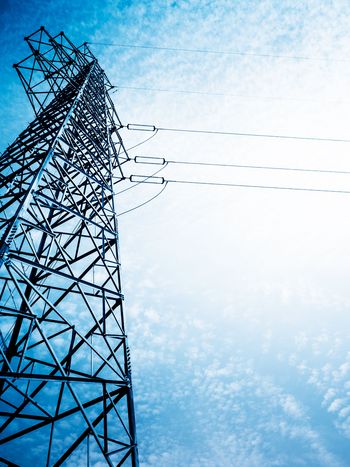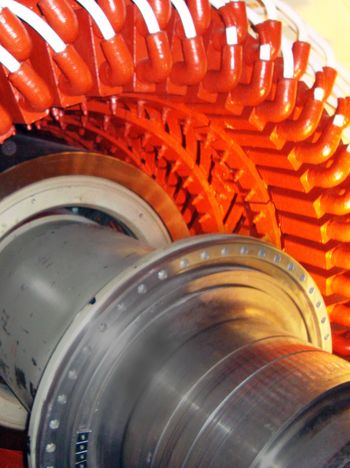Insulated cables
by Marco Marelli, Chairman & Alain Gille, Secretary
Spread of a virus
Why hiding? Why talking about technical activities about insulated cables when the most trending topic is the diseases caused by a virus?
The coronavirus COVID-19 has shaped and is shaping in turns the life of many of us and it’s changing behaviors and daily habits. It’s contagious. When it starts spreading in a specific area it typically has a R0 coefficient of around 2-2.5, meaning that each infected person is going to infect between 2 and 2.5 other people. The restrictions to mobility and the measures that many Countries have taken have the scope to reduce this coefficient and to limit the diffusion.
The contribution of everybody is of essence to win this “battle”.
There are many lessons we can learn from this pandemic event that can be transferred and applied in many other fields. One of them is about the ability of individual and groups to influence the diffusion of something. As we can, with our behaviors, reduce the diffusion of a virus, we can as well influence the diffusion of knowledge, the acceleration of actions, the spread of enthusiasm.
Thinking about the work we do as CIGRE and as SC B1, we’ve seen this positive attitude during the years. At the end of 2019 around 408 different experts were working in SC B1. Since some of expert is active in more than one working body, the overall count is of 539 contributions in the various working bodies. Among them 65 are young WG Members: people aged less than 35 who will be the backbone of future activities. Another sign of the positive spread of enthusiasm is the improved diversity within Working Bodies: there is a fair balance between the different types of associated, coming from users, vendors, academy, there is an improved geographical distribution of participants, there are more women contributing and leading WGs.
These are excellent results and the number and variety of people active in SC B1 is second only to their quality!
Looking ahead
This community of people show a constant attention to the evolution of the electrical system, thus supporting the evolution of the Study Committee itself.
During the past 10 years the changes of the technical items within SC B1 have been driven by:
- Willingness to support the improvement of core technologies and promote quality
- Focus on “Power Systems of the Future” and “Best Use of Existing Systems”
- Attention to needs of the energy network
Since the most of developments were associated to Submarine and HVDC Cables, this attention was reflected in the increased number of Working Groups on these topics: from 5 (26% of all WGs) in 2009 to 17 (57%) in 2019.
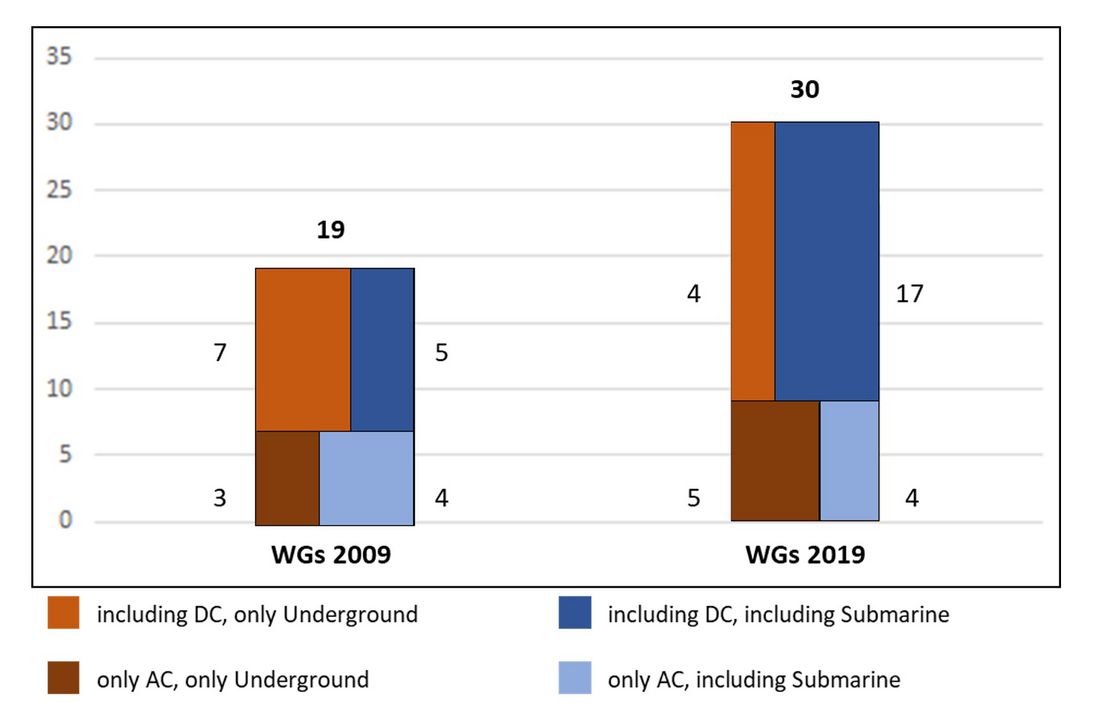
In parallel, SC B1 is still committed to enlarge the focus of all activities, from the traditional high voltage (HV) and extra high voltage (EHV) transmission applications, to distribution, embedded generation and smart grids medium voltage (MV) cable system applications.
Looking at the 10 years ahead, most likely HVDC and Submarine cables will be still taking a large share of work. Specific focus will be on quality and reliability, as well as the improvement of mechanical performances for submarine cables (deep depths, fatigue resistance and other aspects related to emerging applications).
Likewise, the extended view to higher and lower voltages than traditional scope of SC B1, aligning with the CIGRE “End-To-End” stream, will cause the need for specific works and studies on UHV in both AC and DC, along with more cooperation and coordination with other SCs to work on LV and MV, in particular for DC.
There will be also a large attention to emerging topics: increased digitalization may impact on (and may be impacted by) massive monitoring of cable systems, use of data coming from that, application of new IT technologies, including IoT.
Environmental aspects, economical aspects, accessibility, energy-for-all, technical growth, education, and everything relates to sustainability will continue to play a significant role, transversally in all SC B1 activities.
Structured for efficiency and quality
Within the wide field described above, the scope of work of SC B1 covers theory, design, applications, manufacture, installation, testing, operation, maintenance, end of life and diagnostic techniques of insulated cable systems.
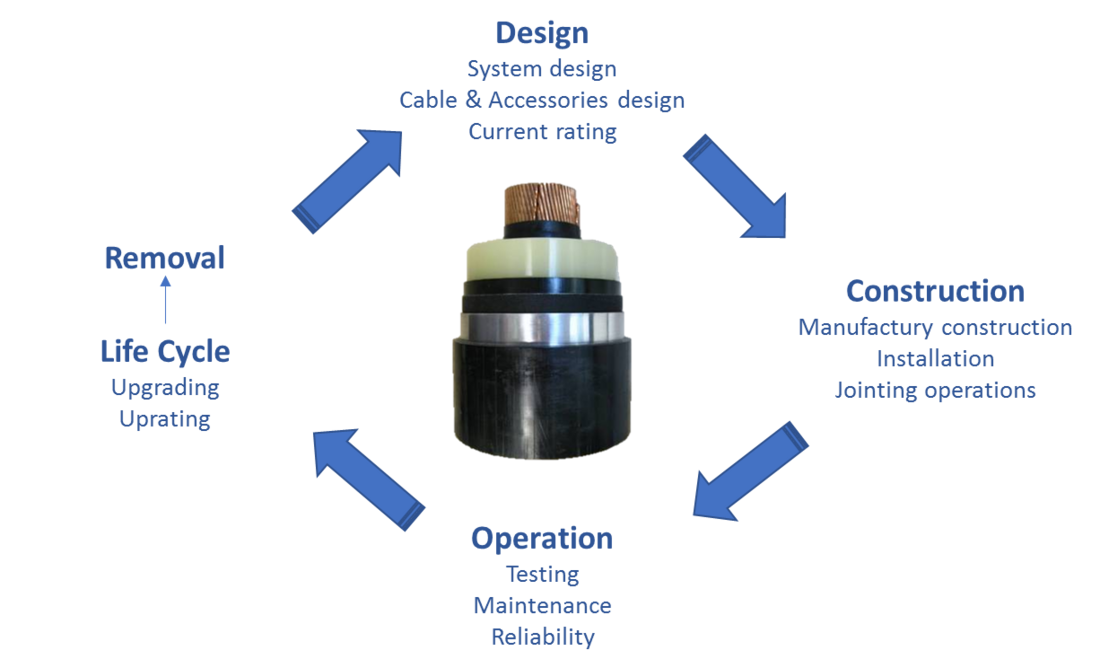
The Strategic Plan for SC B1 published in 2017 is still valid and very applicable. This document spans a period of 10 years and it is intended to define the mid to long term goals of the SC and to provide a global framework on which to base its activities.
Strategic Directions and activities of the Study Committee SC B1 are fully aligned with most recent strategies and guidelines coming from the Technical Council of CIGRE.
SC B1 is organized and structured accordingly.
SC B1 has therefore a Chairman (Marco Marelli, IT), a Secretary (Alain Gille, BE) and – at the end of 2019 – a composition of 24 Regular Members, 12 Observer Members and 6 Additional Members that are bringing additional competences to the traditional “power transmission” background of most of Members.
The structure of CIGRE SC B1, the long term plans, the continuous addition of new energetic people, are supporting the progress in the daily work together with the four pillars that help to address the work within the “Insulated Cables” community:
- Empowerment of individuals in their contribution to Working Bodies, where they represent their respective Countries.
- Efficiency and Quality, with tough targets on the time-to-market of the works of WGs.
- Team spirit, to enjoy the unique international network of people and to have fun while working.
- Communication and local presence, encouraging all people to be ambassadors of B1 in local and international events.
As normal, most of the work of CIGRE Study Committee B1 is done through Advisory Groups and Working Groups.
There is anyhow another important dimension of SC B1 activities, which are the various symposia, colloquia, workshops, where experts are actively participating.
Spread of knowledge
Among all events, two in particular attractive for cable experts. Both of them happened in June: the CIGRE Symposium in Aalborg (DK) and the Jicable conference in Versailles (FR). Both of them have been the occasion to share views and exchange knowledge.
The Symposium hosted by the Danish National Committee and supported by eight Study Committees was titled “Going Offshore”. Its main focus was to provide a forum for recent research results and system operations experience related to the rapid transformation of power networks and markets and the challenges imposed on such networks by the introduction of increased amounts of renewable energy.
Main learnings for SC B1 can be summarized with three slogans:
- Intelligence is the future: condition monitoring provides valuable information about the state of the assets, this improves reliability and drives down costs across the whole cable life;
- Simplicity is not shortcuts: detailed calculations and modelling may lead to better solutions; their verification and test shall be driven by accuracy;
- Future needs cables: new cable applications for renewables, both AC and DC, are improving their resilience, their development is based on more robustness in design, more focus on testing, more experience in installation.
The intense days of technical sessions were complemented by a technical visit to an offshore wind generation plant, that gave the glimpse of the expected future developments.
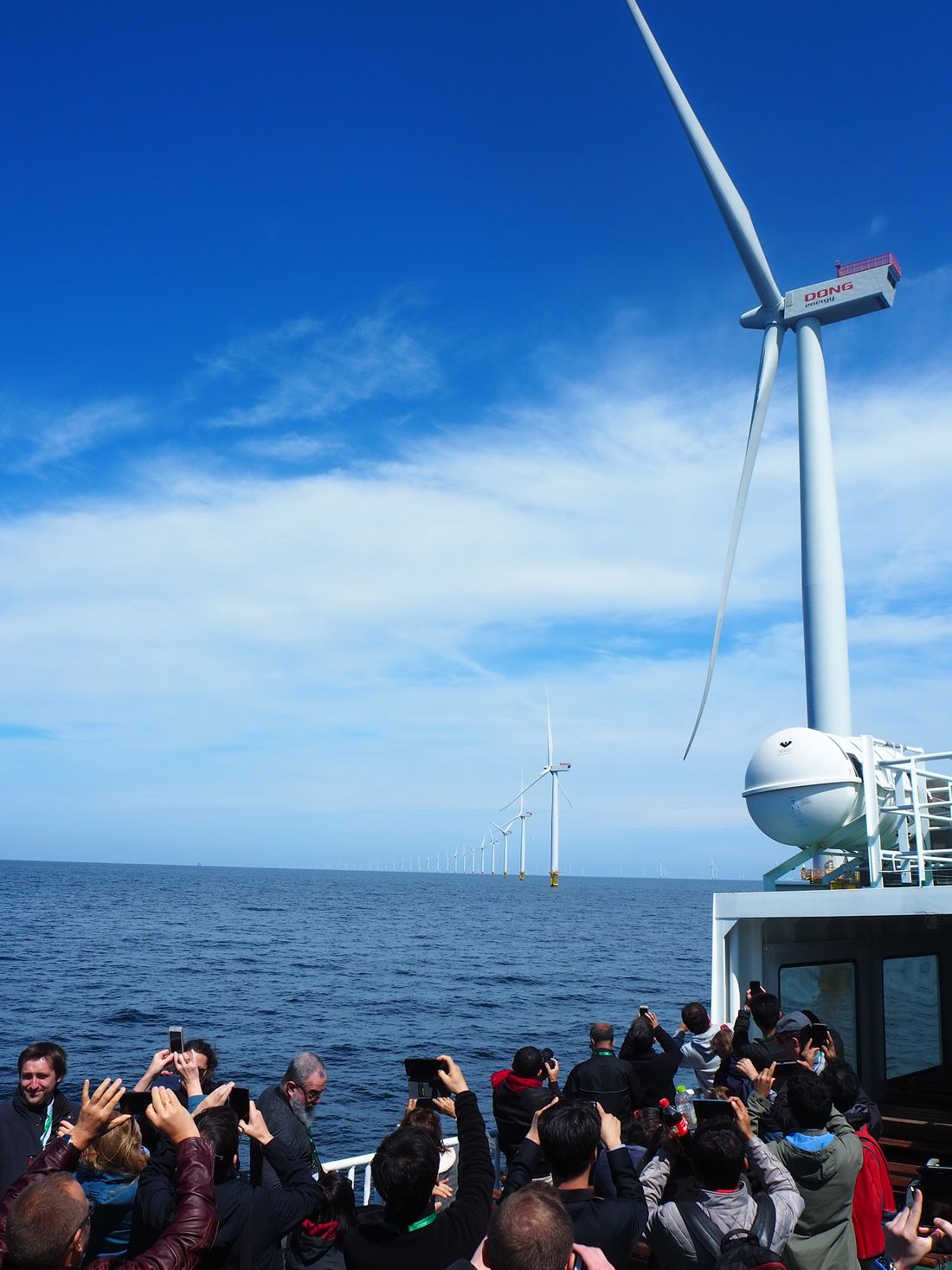
Technical visit to Anholt Offshore Wind Farm
The second very important gathering on the year was Jicable, that is an international forum for the exchange of information in the fields of research, industrial development, installation, operation and diagnoses relating to insulated power cables and their accessories from low voltage and special cables up to ultra high voltage cables and cables of new technologies. This event happens every 4 years in his full format, while in between there is typically another conference that is Jicable HVDC and is very focused on the specific topic.
The 2019 edition has been the “full format” one and has been attended by over 800 people, with significant contribution from “Cigreans” in all technical sessions. The Opening Ceremony hosted a speech from Marco Marelli, SC B1 Chairman, highlighting the main developments within cable sector and expectations from CIGRE from the conference, and a lecture from Marcio Szechtman, Chairman of CIGRE Technical Council, titled “HVDC Technology – key issues for future grids” highlighting the evolution of converters and equipment and their interface with cables.

Opening Ceremony with Marco Marelli, Chairman SC B1 (second from left) and Marcio Szechtman, Chairman CIGRE Technical Council (fifth from left)

Closing Session Panel chaired by Harry Orton, convener WG B1.54 (first from right)
The Closing Session was predominantly composed by a Panel about cable-related network disturbances; experts were members of WG B1.54 “Behavior of cable systems under large disturbances (earthquake, storm, flood, fire, landslide, climate change)” and the Panel was chaired by Harry Orton who’s also the WG convener.
Jicable confirmed to be a pillar for activities of cable experts ant it is considered as the SC B1 workshop for Insulated Cables. Outcomes of this happening are helping to shape the direction of the Study Committee and to trigger the initiation of new working bodies.
In addition to conferences and events, that for 2019 included Insulated Cable Committee meetings in US, AORC B1 Workshop and other Regional events, diffusion of knowledge was also based on publications.
SC B1 published six Technical Brochures, two of which are the result of joint works with other Study Committees:
- TB 748 - Environmental issues of high voltage transmission lines in urban and rural areas
- TB 756 - Thermal monitoring of cable circuits and grid operators’ use of dynamic rating systems
- TB 758 - Test regimes for HV and EHV cable connectors
- TB 770 - Trenchless technologies
- TB 773 - Fault location on land and submarine links (AC & DC)
- TB 784 - Standard design of a common, dry type plug-in interface for GIS and power cables up to 145 kV
In addition to them, the most important publication has been the Reference Paper on “Overhead Transmission Lines, Gas Insulated Lines and Underground Cables”: a joint work with SC B2 and SC B3 that was published on Electra 307 (December 2019). This paper provides basic information, to explain the fundamentals of the technologies in such a manner that it could be understood by a non-technical person or a person not involved on a day-to-day basis in that industry.
SC B1 is also working on the completion of a Green Book on HV Accessories (to be published in 2020) and cooperating to the preparation of the CIGRE publication “Electricity Supply System of the Future”, also expected to be issued this year.
Last but not least, in early January 2020 the CIGRE Newsletter “Future Connections” included a paper titled “Submarine cables, there’s power under water!” that highlighted key developments of technologies and applications of subsea cables, that are among the most important key enablers for the energy transition.
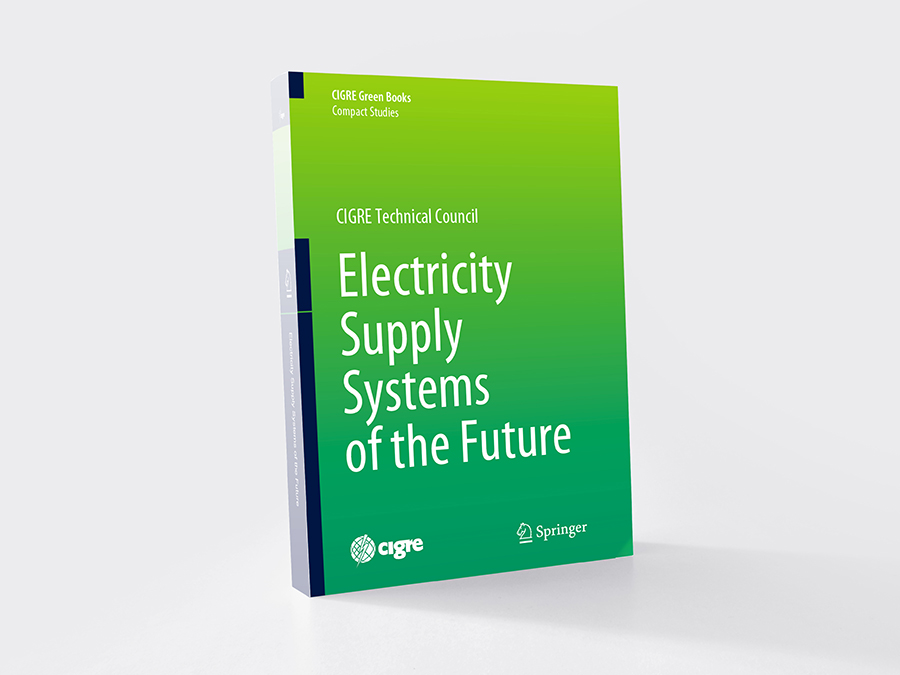
The Green Book is available for purchase on our partner's website Springer.
If you are a CIGRE Member, please contact us to benefit from a 40% discount on your purchase.
Technical activities
Enthusiasm, dedication and active participation of people have been the enabler for the results of the 2019 Study Committee Meeting: the two very intense days in early September in Fredericia (DK) have been very effective and this was important to verify the progress of working bodies and to launch new works.
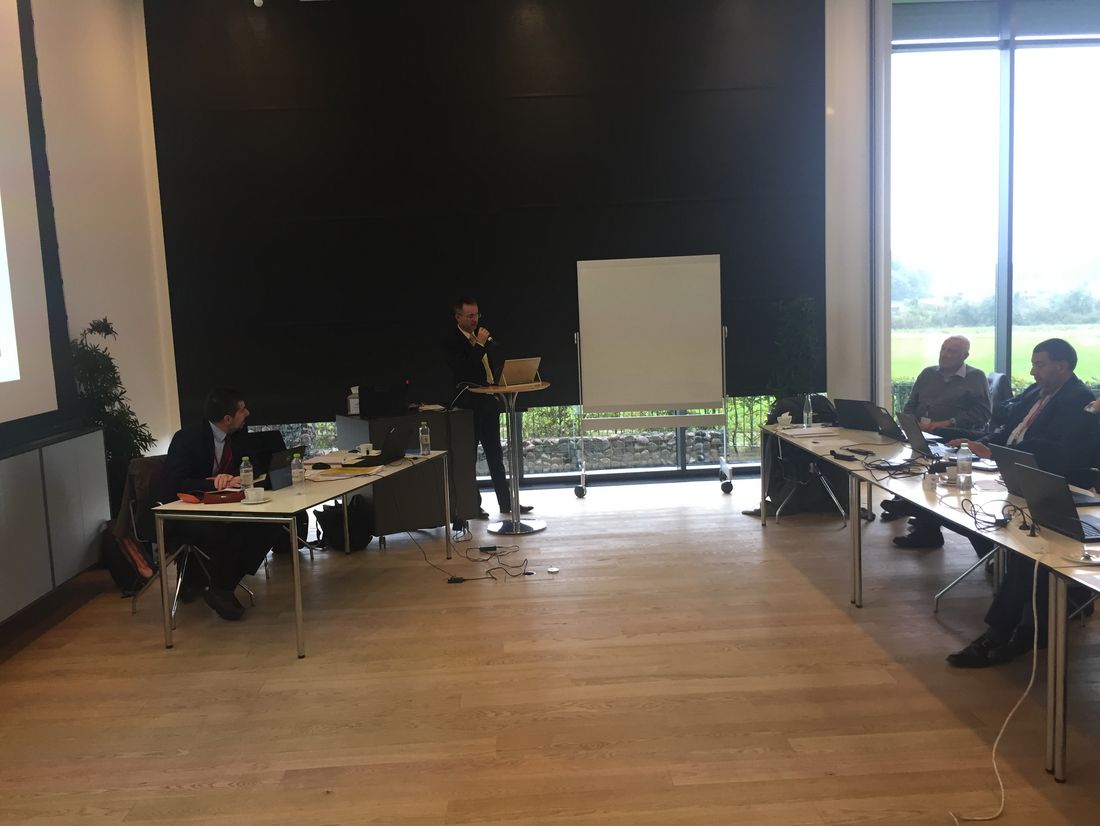

Study Committee B1 Meeting in Fredericia
The technical work of SC B1 is indeed done through Working Groups. Each year, new Working Groups are launched to address the need coming from stakeholders.
The new work items are decided during the Annual Study Committee Meeting. Following decision of the Study Committee the Terms of Reference (TOR) are most often prepared by Task Forces.
The proposals of New Work Items submitted to the Study Committee are prepared by the Customer Advisory Group (CAG) and formally established by the Strategic Advisory Group (SAG) of the Study Committee. Each Region of the world is represented in the CAG to gather the needs of the Regional Target Groups. At each CIGRE Session, questionnaires are proposed during the Group Discussion Meeting to identify the needs of the Target Groups of the Study Committee.
The work of Study Committee SC B1 is also kept tuned with IEC, IEEE, and other interest groups, as well as with Local and Regional CIGRE organizations.
All the many technical activities currently on-going within SC B1, at different degrees of progress could be found in the Annual Progress Report published on the web site. During 2019, lot of interest for new works has been around reliability, interface issues within systems, new designs and applications, cable performances and their monitoring.
The following WGs were approved beginning of 2019:
- WG B1.68: Condition evaluation and lifetime strategy
The Technical Brochure 358 "Remaining life management of HV cable systems" was published 10 years ago. This WG have started collecting experiences on maintenance strategies for increasing cable Remaining Life (RL) and investigating on how to re-define Health Indices (HI) and Reliability Indices (RI) accordingly. Working Group covers extra high voltage and high voltage cable systems, for underground and submarine applications, both in AC and DC. Different technologies will be considered, including fluid filled, mass impregnated and extruded insulation types of cable systems. Jacco Smit (NL) is convening the WG.
- JWG B1/C4.69: Recommendations for the insulation coordination on AC cable systems
Insulation co-ordination is required for insulated AC cable systems as part of planning studies, system impact studies, equipment design studies, for design and specification verification, and for testing the insulation systems. A recent, thorough review of TB 189 “Insulation coordination for HV AC Underground cable systems” concluded that an update of the TB is required. Thinus Du Plessis (NL) convenes a Joint Working Group engaging both B1 and C4 experts. The scope is rather wide, including all voltage range from MV to EHV made with different technologies, in many installation scenario and many network configurations.
- WG B1.70: Recommendations for the use and the testing of optical fibers in submarine cable systems
Fiber Optics are used in AC and DC land and submarine cable systems for control as well as asset condition management. The use of Distributed Sensors (Thermal, Strain, Acoustic) in particular is becoming more prevalent. Due to the proximity of the power cables, induced voltages and currents are an issue and have produced failures specifically in AC three-core subsea cables. The type of fiber, batch to batch variance and O&M repair implications have had profound effect on some projects and these recommendations will address them. Roman Svoma (GB) convenes the WG.
- WG B1.71: Guidelines for safety risk management in cable systems
Safety issues can be identified and inventoried all along the Life Cycle of land and submarine cable systems. Several TB published by SC B1 have sections dedicated to Safety Issues. They cover some peculiar aspects of Safety but, to-date, there is no SC B1 document covering all Safety issues and providing guidelines to assess and mitigate risks. The Working Group convened by Julio Lopes (BR) would put order to existing SC B1 documents and references about safety issues, with the aim to identify potential gaps and recommend further steps.
- WG B1.72: Cable rating verification – additional cases
This WG is a continuation of WG B1.56 about “Cable rating verification” that is expected to publish a Technical Brochure in 2020. SC B1 recognized the value of the case studies that have been considered by WG B1.56 and proposed to perform some additional case studies relevant to situations that become rather common in cable projects. This new WG convened still by Frank de Wild (NL) would consider some more complex situations to provide guidance to the cable community on how to perform relevant calculations.
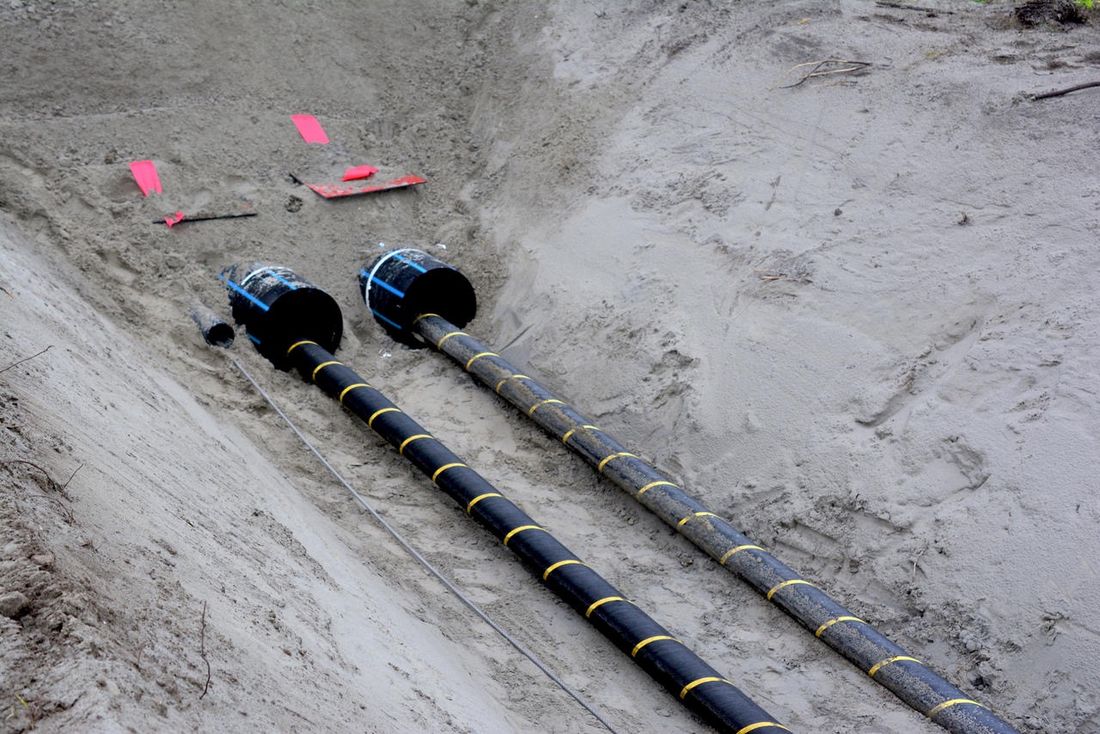
Four new WGs have instead been decided during the 2019 SC Meeting. Their Terms of Reference were prepared during the second half of 2019 and approved either in 2019 or in early 2020 by the TC Chairman. They are the following:
- WG B1.73: Recommendations for the use and the testing of Fibre Optic Cables in land cable systems
Fibre Optics are used in land power cable systems for communication purposes, but also for monitoring. The second purpose is becoming more relevant day by day because it provides information about the condition of the installation, allowing to anticipate possible faults, plan maintenance and optimize the use of assets. Several aspects depend on the use of the Fibre Optics, others depend on the construction and solution used (induction effects when using metallic materials, maintenance).The WG will identify standards and recommendation already available for the use and testing of Fibre Optic Cables (FOC) used in land power cable systems, and will develop points not covered by them. Close attention will be paid to the progresses of WG B1.70, which will cover the same topics but related to submarine cables instead of land cables. The coordination with this WG is needed in order to guarantee that the recommendations are aligned. Alexandra Burgos (SP) will be the convener of this WG.
- JWG B1/B3.74: Recommendations for a performance standard of insulated busbars
Polymer Insulated Busbars (PIB) are not well known by most users or researchers, even they have no clear technical classification. There are no acknowledged requirements regarding their design and performances for manufacturers and costumers. Therefore, it is urgently needed to carry on systematic research on specification and test requirements to ensure its safe and secure operation in substation. The work will cover the present use of polymer insulated busbars, reviewing product types and applications worldwide and relevant basic design principles. On such basis it is foreseen to propose a prestandardization document for further consideration within IEC. The PIB is considered as a cable system (i.e. including accessories) thus the WG – convened by Jianbin Fan (CN) – will cover development tests, manufacturing tests, after installation tests and will provide guidance on the maintenance of Polymer insulated busbars.
- JWG B1/D1.75: Interaction between cable and accessory materials in HVAC and HVDC applications
High voltage cables systems consist of joints and terminations on the one hand and cables on the other hand. These accessories and cables have to function together during the lifetime of the system electrically, thermally and thermo-mechanically. These mentioned aspects of cable systems are addressed in international and within CIGRE recommendations (e.g. TB 520 and TB 663). However, chemical and physicochemical compatibility aspects between accessory and cable materials have so far not been scrutinized. WG will work on HV cable systems, both AC and DC. The purpose is to have a self-standing document that would help the understanding of interface issues relevant to coupling of different materials under high voltage and to propose testing methodologies to prove their compatibility. Convener of this JWG will be Anders Gustafsson (SE).
- JWG B1/B3/D1.79: Recommendations for dielectric testing of HVDC gas insulated system cable sealing ends
Minimization of footprint is a main goal for most equipment manufacturers but is particularly relevant for HVDC equipment due to its application offshore where space comes at a premium, or onshore where there is little public support for large infrastructure. For this reason HVDC gas insulated systems are becoming of importance. How to qualify an HVDC GIS cable sealing end has been a subject of discussion. Testing of HVDC cable systems with extruded polymer insulation has been addressed by TB 496, whereas testing of HVDC gas insulated systems is addressed by the CIGRE joint working group D1/B3.57 (Dielectric testing of gas-insulated HVDC systems). Concerning the HVDC GIS cable sealing end, there is a mismatch between the recommended test approaches for each technology. Cornelis Plet (NL) will convene this JWG which final purpose is to provide recommendations for the dielectric testing of HVDC GIS cable sealing ends.
In addition to the described new Working Groups, during the meeting in Fredericia, Study Committee B1 decided to launch preparatory Task Forces to evaluate the need for future Working Groups on the following subjects:
- TF B1.76: “Increasing the role of quality assurance and quality control to reduce the cable failure possibility”
- TF B1.78: “Status detection, condition monitoring and rejuvenation for power cables”
These Task Forces will give their outcomes to the Study Committee Meeting in 2020 and – in case they will recommend launching working groups – they will propose respective Terms of Reference.
At the end of 2019 CIGRE B1 can count 20 active Working Groups at various stages, 4 Joint Working Groups with B1 leadership, 3 Advisory Groups, 2 preparatory Task Forces. In addition, B1 is involved in 4 JWGs led by other Study Committees.
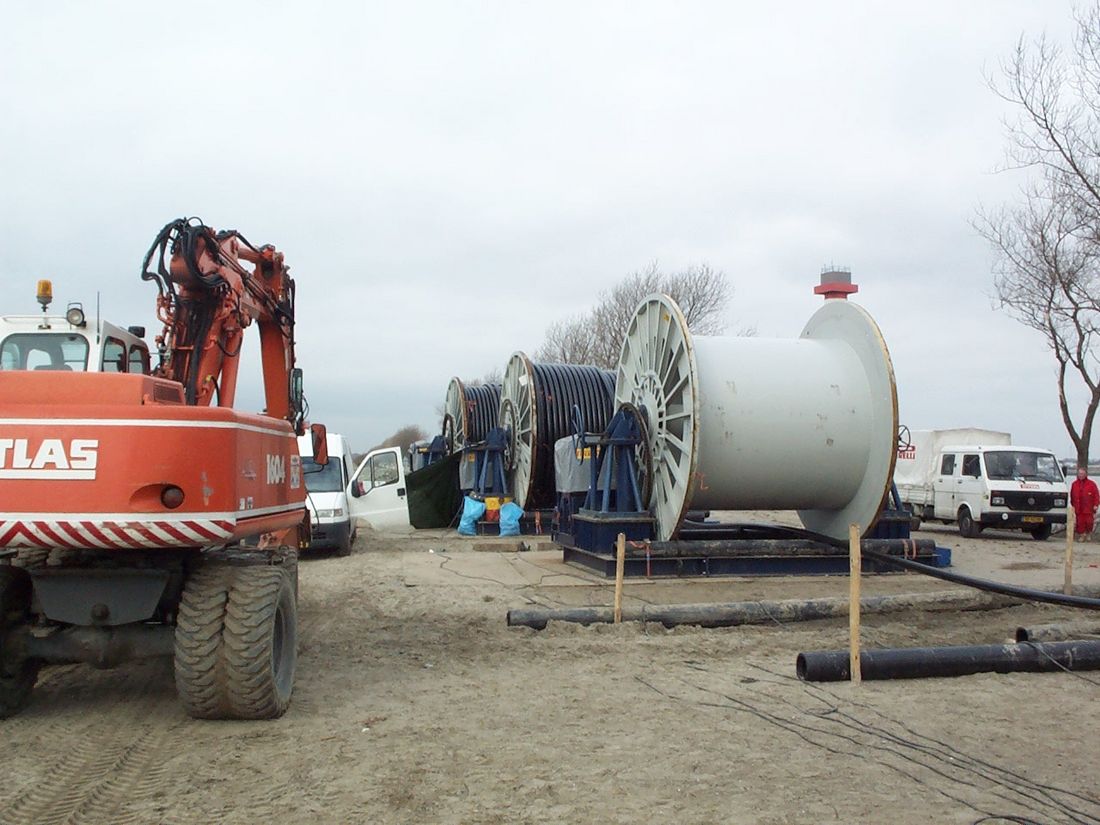
A view on 2020
While spreading the knowledge, we all think positive and hope that the coronavirus will stop spreading. The calendar of 2020 is in any case already affected by the disease, with many WG meetings and Regional Meetings already cancelled, postponed, or transformed to web meetings.
In these circumstances, the possibility to have in Paris in late August the usual Biennial Session is increasing our willingness to contribute and raising expectations for this event, that is – no doubt - the main event of the year for SC B1 and for its community.
During the week in Paris, beside the Study Committee meeting there will be four events that are expected to aggregate experts and stakeholders of insulated cables.
On Monday 24th in the afternoon there will be the B1 Poster Session. This is for the authors of Cigre papers the opportunity to present their work. All authors are given the equal opportunity to display their work and to communicate with interested visitors about it: this is in fact a far more effective way of communication than an oral presentation. The Poster Session will be convened by Carla Damasceno Peixoto (BR) and Russell Wheatland (AU).
At the same time as the Poster Session, on Monday afternoon, there will be a Workshop titled “Extra-long Transnational Transmission Links”. This event is jointly organized by different Study Committees and will focus on the technical and power system challenges, solutions and problems as well as on future developments. SC B1 will have a presentation delivered by Marc Jeroense (SE) about “Key enabling aspects for long distance power cables”.
On Wednesday 26th in the first part of the morning there will be the B1 Tutorial. It will be titled “Thermal rating and thermal monitoring of power cables” and will be delivered by Frank de Wild (NL) with support from other SC B1 colleagues. This subject has been selected because of the wide interest around these topics, that are covering all range of power cables: LV to UHV, AC to DC. The tutorial will present the content of some Technical Brochure already published and the preview of the what will be the outcomes of ongoing Working Groups, all related to thermal aspects.
The most expected happening will be the B1 General Discussion Meeting on Tuesday August 25th. The discussion will be introduced through the Special Report prepared by Geir Clasen (NO). His questions – and thus relevant answers in the form of prepared and spontaneous contributions – will be around innovations and cables for future power systems, recent experiences with existing cable systems, sustainability with attention given to all aspects including environment, asset management and resiliency of cable systems.
Of course, the year longer than a week and the world is larger than Paris!
During 2020 SC B1 will then work to achieve the objectives set in its Strategic Plan and Action Plan. In particular the targets are to publish at least five Technical Brochures during the year, to be present with direct participations to events and Tutorials in the most of Regions, to have webinars on different topics so to cover knowledge needs of many stakeholders.
All these proposals, with the support of SC B1 people, will help spreading the enthusiasm and improving the participation and the interest in CIGRE initiatives about cables.
